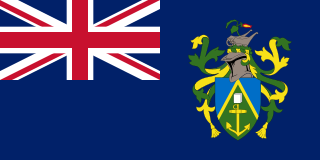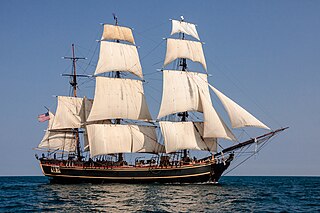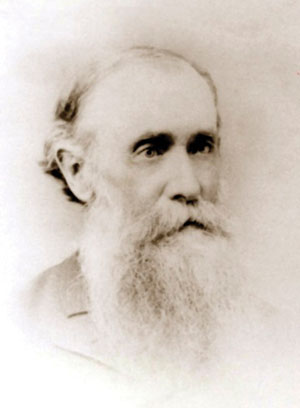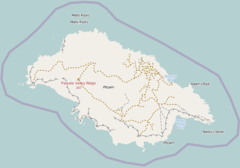
The Pacific Ocean is the largest and deepest of Earth's five oceanic divisions. It extends from the Arctic Ocean in the north to the Southern Ocean in the south, and is bounded by the continents of Asia and Oceania in the west and the Americas in the east.

The Pitcairn Islands, officially the Pitcairn, Henderson, Ducie and Oeno Islands, is a group of four volcanic islands in the southern Pacific Ocean that form the sole British Overseas Territory in the Pacific Ocean. The four islands—Pitcairn, Henderson, Ducie and Oeno—are scattered across several hundred miles of ocean and have a combined land area of about 18 square miles (47 km2). Henderson Island accounts for 86% of the land area, but only Pitcairn Island is inhabited. The islands nearest to the Pitcairn Islands are Mangareva at 688 km to the west and Easter Island at 1,929 km to the east.

The Pitcairn Islands consist of four islands: Pitcairn Island, Henderson Island, and two coral atolls, Oeno Island and Ducie Island.

The history of the Pitcairn Islands begins with the colonization of the islands by Polynesians in the 11th century. Polynesian people established a culture that flourished for four centuries and then vanished. They lived on Pitcairn and Henderson Islands, and on Mangareva Island 540 kilometres (340 mi) to the northwest, for about 400 years.

Oeno Island or Holiday Island is an uninhabited coral atoll in the South Pacific Ocean, part of the Pitcairn Islands overseas territory.

Henderson Island is an uninhabited island in the south Pacific Ocean. It is part of the Pitcairn Island Group, together with Pitcairn, Oeno, and Ducie Islands. Measuring 9.6 by 5.1 kilometres, it has an area of 37.3 km2 (14.4 sq mi) and is located 193 km (104 nmi) northeast of Pitcairn Island. It has poor soil and little fresh water, and is unsuitable for agriculture. There are three beaches on the northern end and the remaining coast comprises steep cliffs up to 15 m (50 ft) in height. In 1902, it was annexed to the Pitcairn Islands colony, which is now a British Overseas Territory.

Ducie Island is an uninhabited atoll in the Pitcairn Islands. It lies east of Pitcairn Island, and east of Henderson Island, and has a total area of 1.5 square miles (3.9 km2), which includes the lagoon. It is 1.5 miles (2.4 km) long, measured northeast to southwest, and about 1 mile (1.6 km) wide. The island is composed of four islets: Acadia, Pandora, Westward and Edwards.

Bounty Bay is an embayment of the Pacific Ocean into Pitcairn Island. It is named after the Bounty, a British naval vessel whose eighteenth-century mutiny was immortalized in the novel Mutiny on the Bounty, and the numerous subsequent motion pictures made of it. The mutineers sailed the Bounty to Pitcairn Island and destroyed it by fire in the bay. Current Pitcairn Islanders are largely patrilineal descendants of the mutineers and their Tahitian wives, as exhibited by some of their surnames.
The indigenous peoples of Oceania are Aboriginal Australians, Papuans, and Austronesians. These indigenous peoples have a historical continuity with pre-colonial societies that developed on their territories. With the notable exceptions of Australia, New Zealand, Hawaii, New Caledonia, Guam, and Northern Mariana Islands, indigenous peoples make up the majority of the populations of Oceania.

HMS Bounty, also known as HM Armed Vessel Bounty, was a small merchant vessel that the Royal Navy purchased in 1787 for a botanical mission. The ship was sent to the South Pacific Ocean under the command of William Bligh to acquire breadfruit plants and transport them to the West Indies to be grown as food to feed the West Indies' large population of slaves. That mission was never completed owing to a 1789 mutiny led by acting lieutenant Fletcher Christian, an incident now popularly known as the Mutiny on the Bounty. The mutineers later burned Bounty while she was moored at Pitcairn Island in the Southern Pacific Ocean in 1790. An American adventurer helped land several remains of Bounty in 1957.

Hilo Bay is a large bay located on the eastern coast of the island of Hawaiʻi.
Down Rope is a coastal area on the southeast coast of Pitcairn Island in the south Pacific, to the east of the Aute Valley and north of Break Jim Hip, it lies on the eastern side of an inlet and contains large petroglyphs on the rock face, testament to the Polynesian settlers of centuries ago. It is described as "a steep cliff located on the southern coast south of Ned Young's Ground, and west of St Paul's Point. At its foot, despite its perilous descent, is a popular picnic area and Pitcairn's only beach." The descent from the cliff top is said to be "spine chilling". There is anchorage at Down Rope and ignimbrite is also found in the vicinity.
Pitcairn Radio Station was a radio station located at Taro Ground near the southern coast of Pitcairn Island in the south Pacific. It was located on the highest point of the island at 272 metres above sea level. It was used by the New Zealand Meteorological Service, and VP6PAC, the Pitcairn Island Amateur Radio club. Its location was considered for a wind farm to supply the island's population with electricity but this initiative has stalled in 2013 when the contractors never delivered.

HMS Briton was a 38-gun fifth-rate frigate of the British Royal Navy's Leda class. She was ordered on 28 September 1808 and her keel laid down at Chatham Dockyard in February 1810. Navy veteran Sir Thomas Staines was appointed her first captain on 7 May 1812 but did not join the ship until 17 June 1813 owing to his being at sea aboard HMS Hamadryad. After a period of cruising in the Bay of Biscay, the vessel set sail for South America where during the course of several missions she unexpectedly encountered the last member of the crew that had seized HMS Bounty from its captain Lieutenant William Bligh during the 1789 mutiny aboard the ship. With the coming of the Pax Britannica in 1815, Briton undertook various voyages before she was broken up in 1860.

The Bounty Bible is a Bible that is thought to have been used on HMS Bounty, the ship famed for the Mutiny on the Bounty.
Robert Pitcairn was a Scottish midshipman in the Royal Navy. Pitcairn Island was named after him: he was the first person to spot the island on 2 July 1767, while serving in a voyage in the South Pacific on HMS Swallow, captained by Philip Carteret.

John I. Tay was a Seventh-day Adventist missionary who was known for his pioneering work in the South Pacific. It was through his efforts that most of the inhabitants of Pitcairn Island were converted to Adventism, and that the General Conference of Seventh-day Adventists purchased the Pitcairn schooner for missionary work in the South Pacific.

Pitcairn was a schooner built in 1890 for the Seventh-day Adventist Church for use in missionary work in the South Pacific. After six missionary voyages, the schooner was sold in 1900 for commercial use, and renamed Florence S. She was lost by stranding on the island of Mindoro, Philippine Islands, on 17 October 1912.















